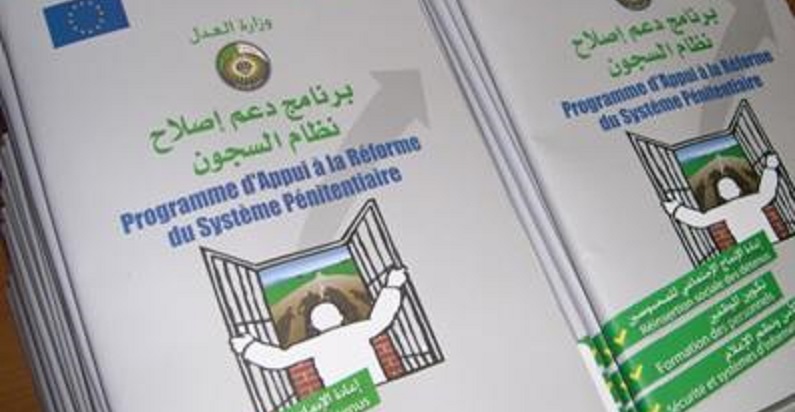-
10 September 2014
Category : Opinion
More than just bars
Hace siete años, la densidad carcelaria en Argelia era de 170 reclusos por cada 100 plazas en centros penitenciarios construidos durante la época colonial (1830-1962). Hoy, es de 150 por cada 100, se cuenta con prisiones que cumplen los estándares internacionales de detención y con un cambio de mentalidad: los centros penitenciarios son lugares para la reinserción social de los reclusos. Este es el resultado de más de un lustro de trabajo, apoyado por un programa financiado por la Comisión Europea (CE) y gestionado por la FIIAPP, para comenzar a reformar el sistema penitenciario del país norteafricano.Seven years ago, prison density in Algeria was 170 inmates for every 100 spaces, and inmates were held in prisons built during the colonial era (1830-1962). Today, it is 150 per 100, and inmates are held in prisons that meet international detention standards. There has been a change in mentality: prisons are places for seeking the social re-integration of inmates. This is the result of more than five years of work, supported by a programme financed by the European Commission (EC) and managed by the FIIAPP, aimed at starting to reform the prison system of this North African country.

“Clearly, prison conditions affect later re-integration into society and prevention of recidivism”, asserts Mercedes Herrera. Prison overcrowding is just the tip of the iceberg of an issue with multiple emergent consequences, such as health and coexistence problems, that complicate the social re-integration of inmates. Herrera, who is also one of the experts sent by the FIIAPP to Algeria to participate in the EC project in support of the reform of the Algerian prison system: “Programme supporting reform of the prison system in Algeria 2008-2014”, states that this network of problems makes it impossible to apply individualized rehabilitation approaches to the inmates.
“Up until now, and not only in Algeria, people believed in this outmoded vision of prison treatment where work and training amounted to rehabilitation work: if we’re capable of preparing people to do a job and training them, then illiterates enter prison and leave with an education. This only consisted of rehabilitating the prison population. It has been recognized and proven that this is not the case”, says Andreu Estela, the FIIAPP Programme Coordinator. Today, Algeria has adopted all of the UN and Council of Europe guidelines and recommendations for introducing individualized treatment for inmates into prisons.
In the years prior to the start of the Programme, the number of people in prison had increased due to the increase in petty crime, drug trafficking and terrorism. When inmates entered prison, they received a common treatment. “Today, the inmate undergoes a diagnostic evaluation upon entering prison, and, based on that, an individualized treatment programme is established depending on the person’s crime and problems”, explains Estela. A treatment that is, moreover, directed by specialized staff, hired as a result of this reform, which includes psychologists, social workers, teachers, trainers and monitors. The FIIAPP expert states that this dynamic changes the functioning of the Algerian prison system. “It’s been brought up to date and to the same level we have in Europe”, he points out.
With this Programme, which is the working framework between the Algerian Justice Ministry, the Delegation of the European Union and the Spanish Directorate-General for Prison Administration and Social Re-integration, Algeria has taken inspiration from international guidelines and standards for the reform of its prison system, developed a plan to build 80 new prisons, of which 13 are up and running, and improved facilities and developed training courses and workshops for inmates and also staff. “Before, there were 133 prisons and now there are 131, but there are more spaces”, says Estela, putting the data into context. All of these measures are starting to breathe new life into the Algerian prison system and reduce prison density, although this still exceeds the limits: 150 inmates for every 100 spaces. The FIIAPP expert calls this statistic “positive”. “However, the main achievement has been the change in mentality regarding treatment of inmates”, he adds.
In 2013, according to the International Centre for Prison Studiesand based on official data, Algeria, a country with nearly 37 million inhabitants, had a total of 60,000 inmates. The prison density in the country was growing (160 people for every 100,000 inhabitants), especially for petty crime like robbery. In its prison reform, Algeria has also made plans to introduce measures as an alternative to prison, such as community service. This would reduce prison overcrowding, but it still has not been fully developed.
Women and juveniles
The Programme which has supported the reform of the Algerian prison system has also focused on women and juveniles. Although the percentage of female inmates in Algeria is lower than that of men, women represent just 1% of the prison population, the stigma they suffer after being in prison marginalizes them and subjects them to discrimination. “Because of the Algerian social, religious and cultural idiosyncrasy, their difficulties in rejoining society are much greater. In many cases they are rejected by their families and left without any type of support on the outside”, explains Mercedes Herrera.
In order to offer people leaving prison more re-integration possibilities, the Programme has studied the conditions of these women and prepared a series of reports and proposals.
In the case of juveniles, Algeria had already placed an emphasis on this group, which can be convicted starting at 13 years of age, and is giving them training and job-placement assistance following detention in centres for juveniles. Through this Programme, the North African country has benefited from the perspective of European experts and developed proposals for improving the living conditions of this group.
“A prison, in addition to being a place where a person serves a sentence, also must be oriented towards social re-integration of the person serving the sentence”, concludes Herrera.
The views and opinions expressed in this blog are the sole responsibility of the person who write them.




